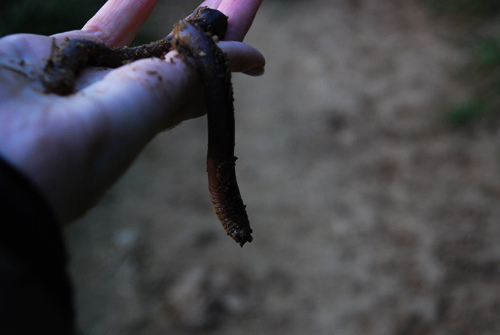Instilling Values among Worms
Erasmo Calzadilla

Havana Times writer Irina Echarry and I decided to build a worm hatchery. We’re now collecting scraps and leftovers of food for the compost – and not even overlooking rinds in the garbage.
The principal objective is to create humus for our tree nursery, but in addition to that we’re excited about practicing and spreading awareness of such a simple and non-aggressive method of improving the planet’s soils, since it seems like even these are being destroyed faster than they are formed.
One feels rich when doing something constructive, and that much better when it’s in good company.
A question has arisen in terms of what species worm to raise though. In Cuba there is one that emerges spontaneously, but in all the bibliographic materials we’ve gone over, the Californian Red Worm is suggested as being the most efficient, healthy, adaptive etc.
After much discussion on the matter, and trying to avoid nationalism and xenophobia in our attempt (which is more difficult than it sounds), we’ve decided to build three hatcheries at the same time: one for the Cuban worms, another for the Californians; and a third internationalist hatchery where both types will coexist.
I don’t know if it’s a good idea. I don’t know if they’ll work together in producing humus, but at least we will be bringing about the formation of values among the worms: those of unity and solidarity among workers of all species.
Worms of all countries unite!






This sounds half-assed scientific-like, so why not, eh? (Still, when discussing worms in Cuba, it’s hard to avoid the thought of the pernicious, destructive and invasive Florida variety…) I’m guessing here that the preponderance of “California Red” (Commie?) worms in the literature might have as much to do with relentless ‘good press/propaganda’ as it does with actual results. Why wouldn’t the native variety be more suited to the climate and soil? Perhaps it’s simply that the north american variety is hardy enuff to survive general industrial agricultural praxis with elan. Go to it, and find out which it is!
As for soil degradation: it’s my understanding that modern permaculture practice using worms, etc., can quickly produce new topsoil by the tonne, in whatever quantities are required, to restore any degraded biosphere almost overnite. All that is really required is the understanding, organization and will to overcome past bad (i.e. capitalistic) praxis — the materials themselves are in fact dirt cheap.
In any case, it’s great to see a stab being made at building a permaculture project where nothing existed before. You people should be commended for starting this up — and even moreso, if you actually get somewhere with it.
Best of luck — and keep us posted regularly.